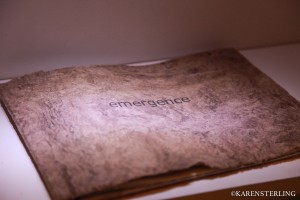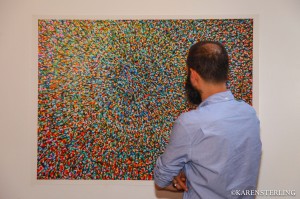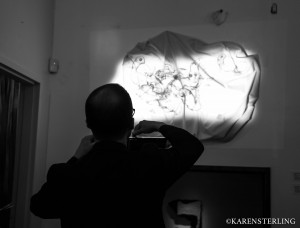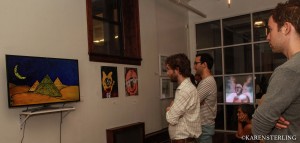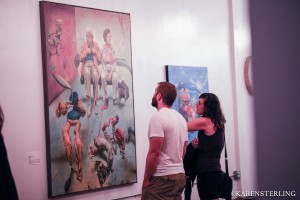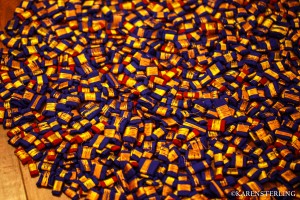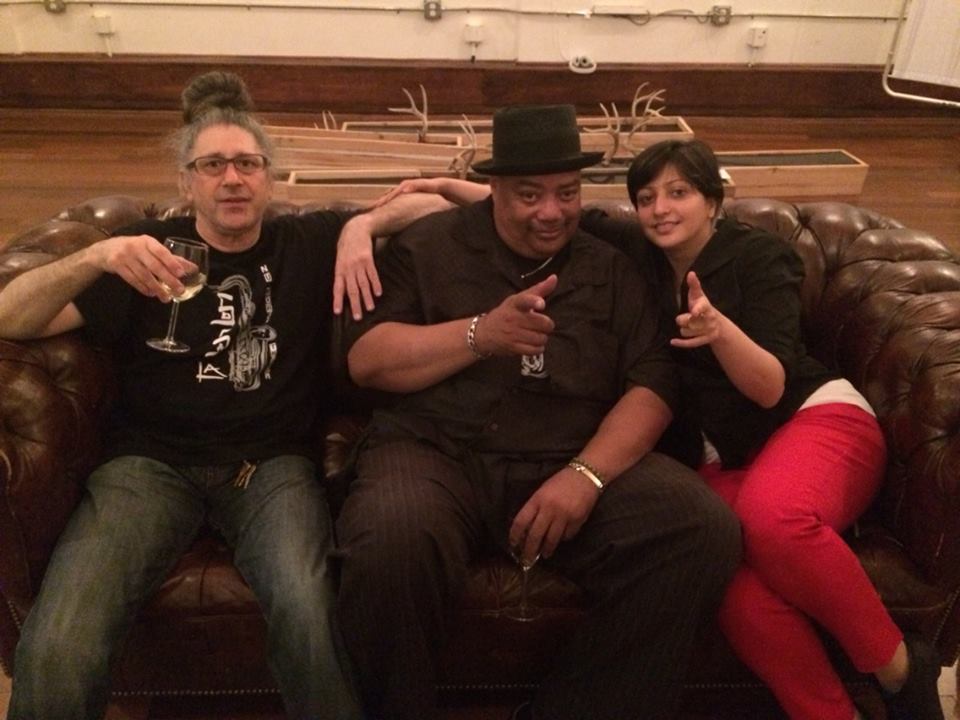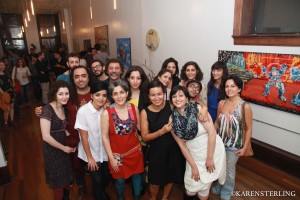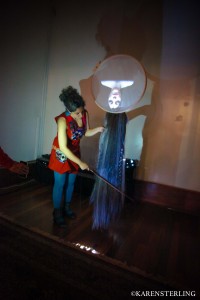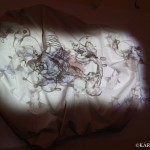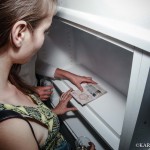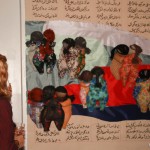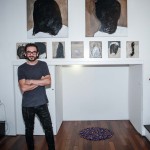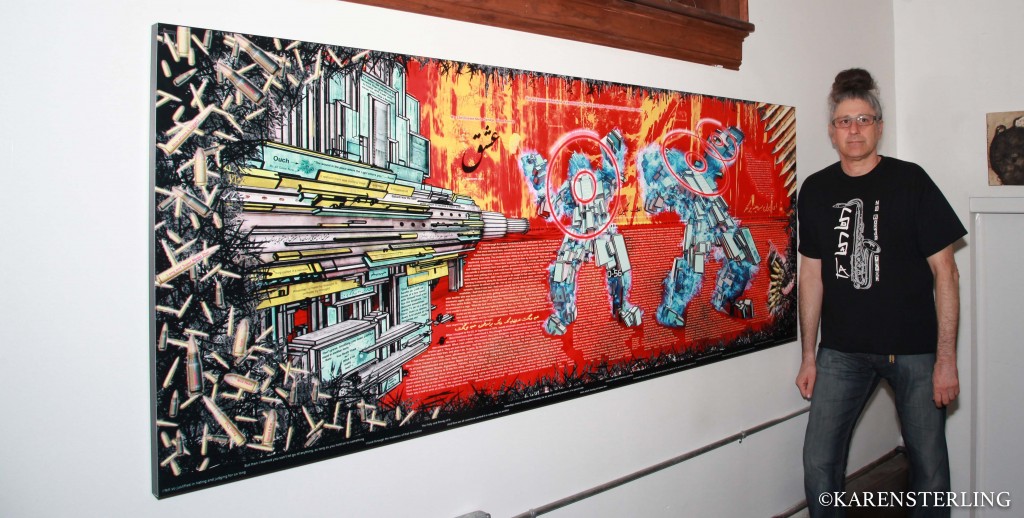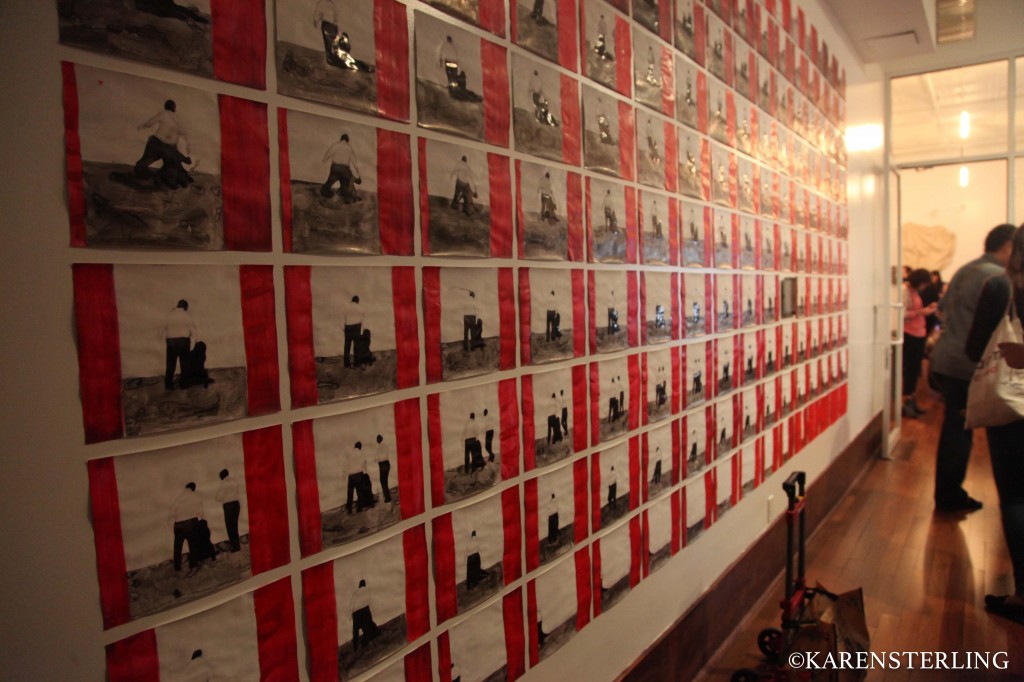![]() Date: September 21 through September 28, 2014
Date: September 21 through September 28, 2014
Venue: FlickerLab (NY)
Review by Dawoud Kringle
ARE WE ALREADY GONE? Artists on the Art of Leaving is an exhibit / art installation held at FlickerLab, curated by Negin Sharifzadeh. FlickerLab held its final showing in Soho from September 21st – 28th 2014 (before astronomical rents forced them to move to Brooklyn’s Dumbo neighborhood).
Ahmed Issawi, Director of Alwan for the Arts, says, “In so far as art should reflect its environment or contend with the problematics of representation, Are We Already Gone, curated by Negin Sharifzadeh, a variable composition of installations, sculptures, and conceptual visual and sound pieces, is emblematic of a world of impermanence, of wondering whether one has wandered away or is still here. Not merely are the works themselves concerned with incompletion, sculptural or architectural suspension, identity not as a notion bequeathed through birth rather as a transformative ongoing process of migration and exile, but more so in where the “art” is displayed: in closets, on kitchen counters, workplace, home, if we know what home is anymore. There is a bifurcation of the notion of time and space. We are already gone for certain, but where we are going or are going qua going is the way it is going to go, is perhaps what Sharifzadeh, an Iranian in Brooklyn, New York, subconsciously trying to explore.”
I attended the opening of the showing. The art work was, at a glance, what one would expect in a Soho gallery; and the work was marvelous. One was immediately impressed by the both the variety and unity of artistic vision presented in the collection.
It would be beyond the scope of this article to delve in detail about the works. The artists (Setare Arashloo, Emily Auchincloss, Negar Behbahani, Golnaz Behrouznia, Orit Ben Shitrit, Marcy Chevali, Ruby Chishti, Ali Chitsaz, Jenn Dierdorf, Leonard Downs Reese, Mike Estabrook, Matthieu Fappani, Roya Farassat, Naghmeh Farzaneh, Serge Hamad, Joshua Hart, Meena Hasan, Lucy Hodgson, Vandana Jain, Suprina Kenney, Francine LeClercq, Reza Marvashti, Danté Mann, Ruth A Mora, Marjan Moghaddam, MaryLinda Moss, Aphrodite Desirée Navab, Moojan Nazmi Ansari, Jonna Pedersen, Nooshin Rostami, Mehran Saber, Mona Saeed Kamal, Sepideh Salehi, Romy Scheroder, Negin Sharifzadeh, Zartosht Soltani, Kamran Taherimoghaddam, Katherine Toukhy, Katayoun Vaziri, and Shadi Yousefian) all presented statements as eloquent as they are diverse.
Yet, despite the lack of monolithic stasis, each artist presented his or her individual perspective on the central theme of the exhibit. One got the sense (and didn’t realize it consciously until later) that these artists are in some ways an exiled community, whether actually or metaphorically.
In the case of the Iranian artists (whose presence seemed to lead the exhibit’s central theme), the political turmoil in their home country has placed these deep thinkers in a position where they had to leave their homes, and, in spite of finding the means of creating their art and communing with kindred spirits, carry what can best be described as a spiritual homesickness (or to those who were born of parents who’d had to leave, inherited the vestiges of that homesickness, while identifying with the culture they were born into). All such people become the product of a blend of cultures. And when cultures meet, there is an initial shock when familiarity is removed, and one is forced to acknowledge the existence of the “non-self.” The result is not the creation of a hybrid, but the emergence of a new culture.
This is what is happening here; and while the pain of the crisis has yet to pass, the passion to succeed and the joy of life itself is there.
The exhibit featured artists from USA, Iran, Denmark, Algeria, Egypt, France, Pakistan, Morocco and India. The theme of “leaving” underscoring of their cultural similarities allows for a conversation on what is revealed to be a universal theme.
This presents an interesting syllogism that the leaders of the world would do well to take note of.
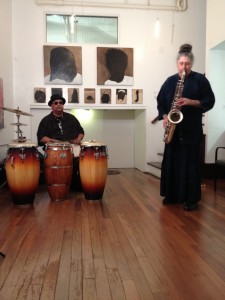 On Thursday, September 25th, SoSaLa performed at the gallery. This manifestation of the ensemble was a duet; Sohrab Saadat Ladjavardi (dressed in a traditional Japanese garment, complementing his trademark topknot) on soprano and tenor saxophone, and Baba Don (Eaton) on congas, djembe and percussion.
On Thursday, September 25th, SoSaLa performed at the gallery. This manifestation of the ensemble was a duet; Sohrab Saadat Ladjavardi (dressed in a traditional Japanese garment, complementing his trademark topknot) on soprano and tenor saxophone, and Baba Don (Eaton) on congas, djembe and percussion.
The music began with a percussion figure over which Sohrab recited what was obviously an improvised variation on a poem that threw the transitional and impermanent nature of corporeal existence into raw, sharp relief, after which the saxophone took over and made its statement. They continued with one if Sohrab’s compositions; a piece that can only be described as Iranian blues.
If the previous piece was Iranian blues, the next piece “Sad Sake” is Japanese blues. There was a strange sadness in the song; as if one were looking from the outside at a man of another nation and culture, and yet knowing him; recognizing yourself in him.
They continued with a piece based in a melody with an Ornette Coleman like quality. Sohrab interspersed his spoken word; a medium he has increasingly employed in recent months. It’s clear that Sohrab has his own artistic agenda; and like most Iranians, does not separate his spiritual and philosophical beliefs from his socio-political beliefs; and all of it is distilled into his music.


